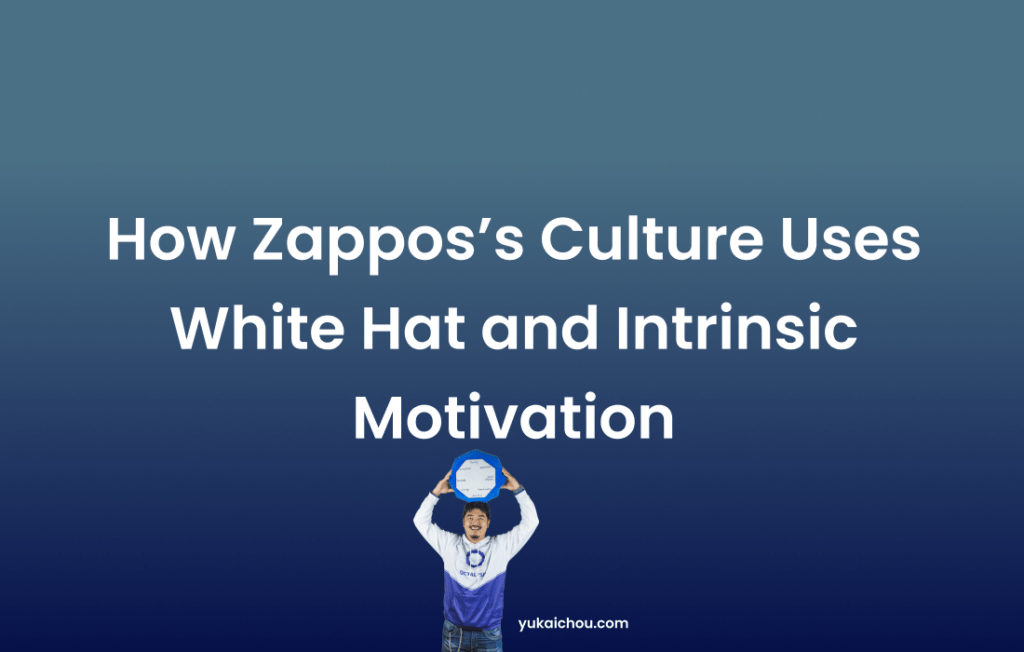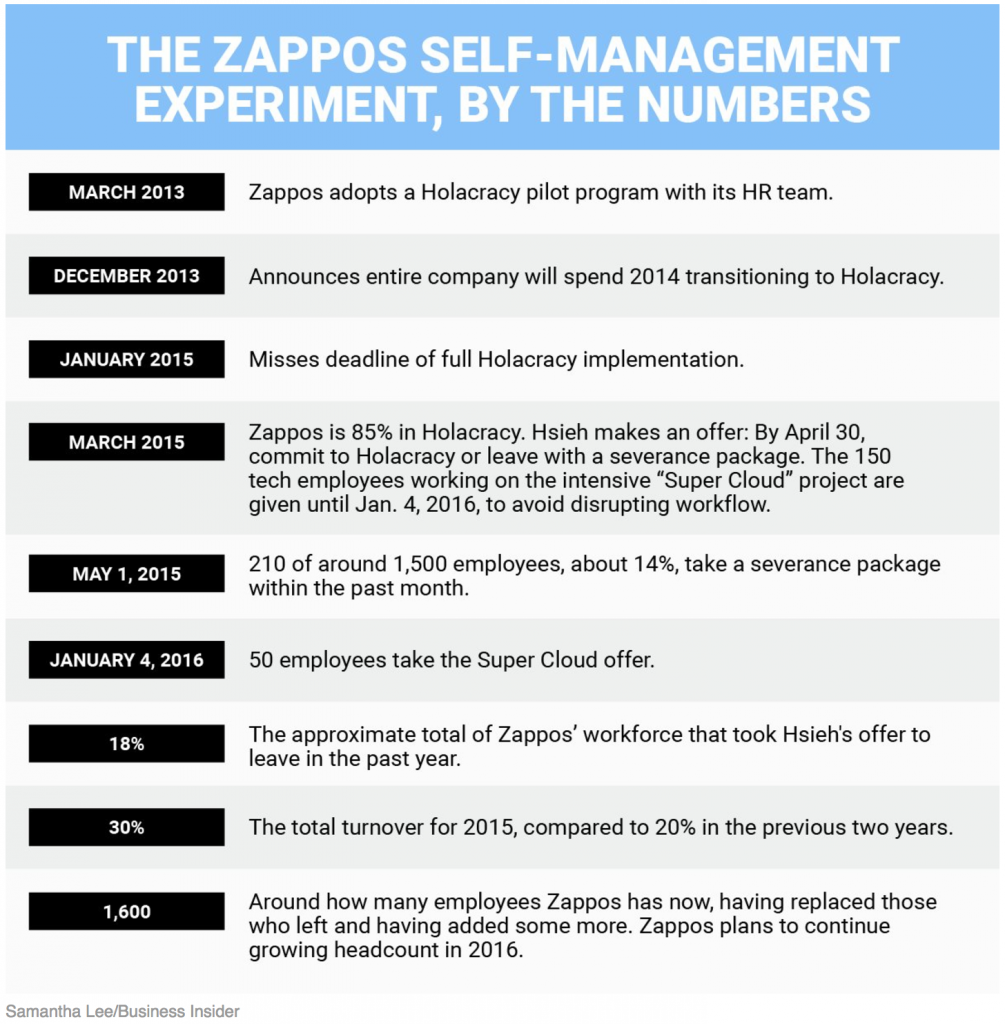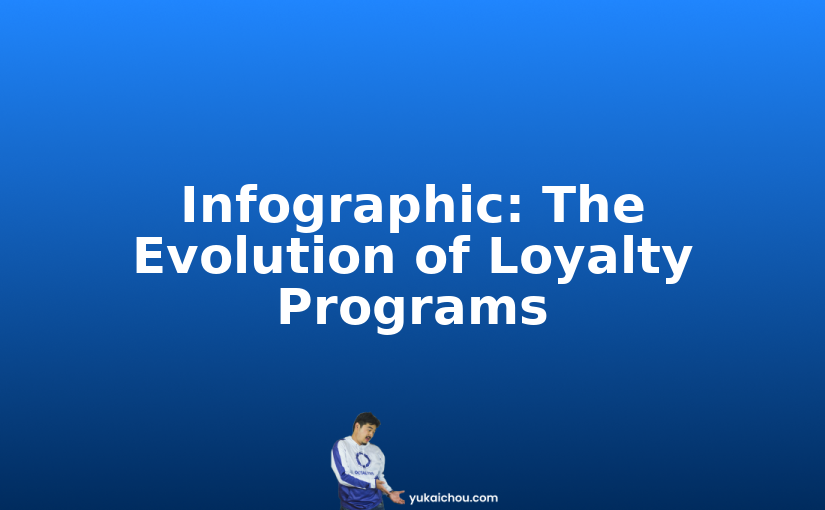This article was written by contributing writer Erik van Mechelen.
Using White Hat and Intrinsic Core Drives in Company Culture
In November 1998 Tony Hsieh sold his company to Microsoft because it had a losing culture. What seemed like a success actually wasn’t one in his view.
What started as an exciting sleeping-under-your-desk startup in 1996 quickly grew to a 100-person company with a culture that had taken a turn for the worse. He even dreaded waking up in the morning and wondered if his employees thought the same.
Bad culture was Hsieh’s explanation for selling.
“We hired all the right people with the right skills and experience, but they weren’t culture fits.”
Tony Hsieh took what he learned at LinkExchange and approached Zappos differently. While other companies talk about work-life balance, Tony Hsieh focuses much more on work-life integration.
“With Zappos we wanted to make sure we didn’t make that same mistake again…so pretty much from the beginning paid attention to company culture.”
We know from Octalysis that the White Hat Core Drives are important for long-term engagement in work settings. Traditional hierarchical structures tend to layer bureaucracy and slow decision-making, removing creativity and meaningful choices from employees who might otherwise make great contributions.
In these settings, situations can develop where employees are motivated by loss and avoidance, scarcity, and money.
Smaller companies usually have the upper hand, more naturally fulfilling epic meaning, creativity and empowerment, and collaboration.
Hsieh understood the difficulties of larger companies, as evidence by a few of Zappos’s core values, which included:
- embrace and drive change
- adventurous, creative, and open-minded
- do more with less
Tony Hsieh Gets Rid of Managers
This was the headline in 2013 when Hsieh rolled out his flat management structure. But Holocracy is a little different than removing management from a command and control system. Managers were out, but there were still lead links and circles and structure.
When Hsieh started to explain the how behind the system, people were forced to look more closely at how Holacracy, the patented model he’s using, actually works.
It turns out Holacracy is a little different than removing management from a command and control system.
Background
This is from Holocracy.org (the system Tony Hsieh is using).
Holacracy is a complete, packaged system for self-management in organizations. Holacracy replaces the traditional management hierarchy with a new peer-to-peer “operating system” that increases transparency, accountability, and organizational agility.
This is easy to understand. Holocracy provides an alternative to command and control systems. Lead links still ensure progress within ‘circles’, essentially productivity units.
Through a transparent rule set and a tested meeting process, Holacracy allows businesses to distribute authority, empowering all employees to take a leadership role and make meaningful decisions.
This appeals to CD5 Social Influence & Relatedness by giving all employees leadership roles, CD4 Ownership & Possession by increasing each individual employee’s authority, and CD3 Empowerment of Creativity & Feedback by increasing meaningful choices.
A lot of people got excited about it, even Ev Williams of Twitter, who tried it with his newer company, Medium, in the early days.
“In Holacracy, one of the principles is to make the implicit explicit — tons of it is about creating clarity: who is in charge of what, who is taking what kind of decision — and there is also a system for defining that, and changing that, so it’s very flexible at the same time.”
The model didn’t work for Ev’s Medium, but Tony Hsieh hasn’t given up on the model that easily.
The Case for Holocracy at Zappos
Tony is confident that despite growing pains the model has enough benefits to play out favorably in the long run. If cities get more efficient as population levels increase, why don’t companies?
Perhaps this quote best explains Tony’s confidence:
“There is a quote that is often attributed to Darwin (whether Darwin actually said it is up for debate, but I believe the general principle to be true): ‘It is not the strongest of the species that survives, nor the most intelligent that survives. It is the one that is most adaptable to change.’ I believe the same is true for companies, and especially for entrepreneurs.”
Tony wants the type of people that are culture fits, and culture fits within Holocracy, to be with Zappos for the long term.
How Zappos is Using Holocracy (and a Timeline)
In 2013, Tony Hsieh decided to implement Holacracy with a pilot program.
Then he decided to implement across the organization, but the company missed its goal of integration by Jan 2015.
Hsieh later regretted not moving more quickly with the decision to roll this out to the entire company. He ended up making employees ‘the Offer’ to either stay or take a severance package in late 2015. About 18% of employees (260 people) took the deal, while 82% stayed. Hsieh mentioned he thought more would leave.
This decision was interesting. In Hsieh’s view, the transition to Holacracy had already taken too long. This ultimatum was a CD8 technique. Some employees did end up taking the severance package and leaving.
A Mirror of Hsieh’s Personal Leadership Style
For me, Hsieh’s decision to implement the Holacracy experiment for the whole company is in line with his motivations to try new things (and echoes his city planning and development ambitions for the northern section of Las Vegas).
It also seems to mimic his own preferred management and leadership style, which is hands-off and empowering of his team.
What’s interesting is how against the grain the empowerment and authority structures seem.
On one hand, the model seems to empower employees and let them develop outside of their conventional skill sets. (A lot of the people who left would have lost their titles or worked on something completely different to their work at the time.)
On the other hand, while the model suggests added flexibility and agility, there are still inherent structures through the Lead Links and Circle system. It will be interesting to see if Zappos’s quirkiness and fun (from its 10 core values) meshes with the new system, even after three years.
A quick look at the Zappos culture site demonstrates the rigor preparing for such a model as Holacracy takes. It’s something different, and it just might be a powerful way to empower employees in the long term.
Whether it succeeds or fails will make critics reconsider or add fuel to the arguments against the model.
What models do you prefer in management and company structure? What is your startup using? I’ll see you in the comments.











2 responses to “How Zappos’s Culture Uses White Hat and Intrinsic Motivation”
From what I see of the system is that on paper it is a good system, but without a strong CD1 to direct the direction and onboarding people who are in agreement with the core principles the system will collapse on itself as the individual elements go spinning off in directions that are not helpful towards the goals of the company, if any. They need a strong platforming stage and even stronger end game if they want to keep the company alive. Also as in a small group this is good. They can maintain cohesiveness. But like microorganisms as they become more complex they become they need a system of groups or organs. They also need a system to keep all the organs doing the things that help the organism moving towards a common goal like keeping the animal alive. So the small groups will probably need to become separate groups of a specialized function and in the end they will need a strong visionary leader? or system to organize all these parts and keep them functioning towards keeping the organization alive. I think this is like evolution of a new creature/organization.
I agree on importance of CD1, as it is essential to any organization to maximize their performance. The difference here could be that a traditional hierarchical organization can survive or vegetate without a strong CD1 (or the emlpoyees being unaware of it) for a long time due its command and control working style.
On the other hand a holacracy style company is depending on its CD1. Small organizations like startups have their strong CD1 and thus in my opinion it is easier to deploy holacracy there. And if they have a valid business case, they can outperform the traditional companies due to their faster adoption to the changing environment.
On the other hand, to transform a large hierarchical organization is hard due to the existing culture of command and control. Both the managers and most of the employees are used to it, and although they are mostly unsatisfied with it, they are resisting the change. This means you need the right people (with the right culture).